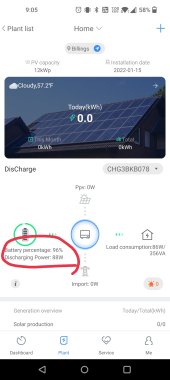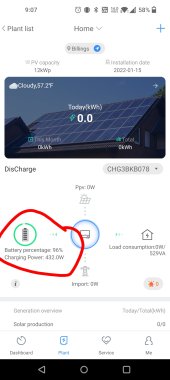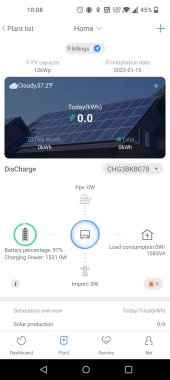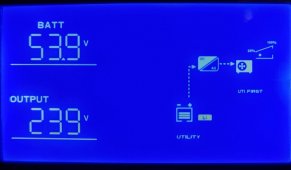Roger Harding
New Member
I have had a 3.15kW Solaredge grid tie system since April 2019. I recently installed a Growatt 12kw DVM MPV low frequency inverter with a 20.5kWh LiFePO4 battery for emergency use. I had previously tested the system by turning off my main breaker and having the Growatt backfeed my main panel. I was charging my Tesla to burn off the power being generated by my grid tie inverter, as I had heard bad things about having the grid-tie producing more power than your consumption.
Fast forward to yesterday, I finished building an EVE 304ah 48v pack and added it to the system. I charged the entire system overnight using the inverter and a Signature Solar 25a(18a) battery charger. This morning after my girlfriend left for work I switched the house over to battery power and proceeded to cook some breakfast on the electric stove to see how the system handled it. Shortly after that I received a phone call, and I lost track of how much power my Solaredge grid-tie inverter was putting out. I opened the Solaredge app, and to my dismay I saw I was producing .57kW, which I knew was more than my house was using. I rushed to the basement to make sure the Growatt wasn't having a meltdown, and to my surprise, my Victron Smart shunt said there was positive power flowing through it. I opened the ShinePhone app, and where it normally said Discharging, it instead said Charging. That excess power was backfeeding through the Growatt and it was charging my battery bank. I had no idea that the system was capable of this, but I had suspected that having a low frequency transformer the system would handle this better than a high frequency inverter.
Did anyone else know that this was something that the Growatt LF inverters we're capable of? I am overjoyed at this discovery! ?
Fast forward to yesterday, I finished building an EVE 304ah 48v pack and added it to the system. I charged the entire system overnight using the inverter and a Signature Solar 25a(18a) battery charger. This morning after my girlfriend left for work I switched the house over to battery power and proceeded to cook some breakfast on the electric stove to see how the system handled it. Shortly after that I received a phone call, and I lost track of how much power my Solaredge grid-tie inverter was putting out. I opened the Solaredge app, and to my dismay I saw I was producing .57kW, which I knew was more than my house was using. I rushed to the basement to make sure the Growatt wasn't having a meltdown, and to my surprise, my Victron Smart shunt said there was positive power flowing through it. I opened the ShinePhone app, and where it normally said Discharging, it instead said Charging. That excess power was backfeeding through the Growatt and it was charging my battery bank. I had no idea that the system was capable of this, but I had suspected that having a low frequency transformer the system would handle this better than a high frequency inverter.
Did anyone else know that this was something that the Growatt LF inverters we're capable of? I am overjoyed at this discovery! ?







